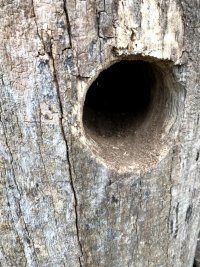That age-old topic again - Insurance!
I haven't been a member of BASC for quite a while; the membership fee seemed high for my level of activity TBH and I don't entirely agree with all their conservation views (however, recent correspondence from them has shown a more balanced viewpoint).
Anyway, I was considering re-joining to get cover for my shooting activities. My shooting is restricted to rabbit, pheasant and grey squirrel but having some kind of insurance cover seems the responsible thing to do. Reading through the cover offered for standard membership I realised it included £10million of employer's liability and the covered activities included 'conservation'. I enquired to clarify, and it would indeed cover me for all my conservation work and any volunteers or paid-for labour (you require employer's liability cover even for volunteers). At £74 the year, inclusive of all membership services, that's excellent value!
I'm going over the small print of the policies at the moment but, unless I find any exclusions that limit its application, I'll be joining back up
I haven't been a member of BASC for quite a while; the membership fee seemed high for my level of activity TBH and I don't entirely agree with all their conservation views (however, recent correspondence from them has shown a more balanced viewpoint).
Anyway, I was considering re-joining to get cover for my shooting activities. My shooting is restricted to rabbit, pheasant and grey squirrel but having some kind of insurance cover seems the responsible thing to do. Reading through the cover offered for standard membership I realised it included £10million of employer's liability and the covered activities included 'conservation'. I enquired to clarify, and it would indeed cover me for all my conservation work and any volunteers or paid-for labour (you require employer's liability cover even for volunteers). At £74 the year, inclusive of all membership services, that's excellent value!
I'm going over the small print of the policies at the moment but, unless I find any exclusions that limit its application, I'll be joining back up






